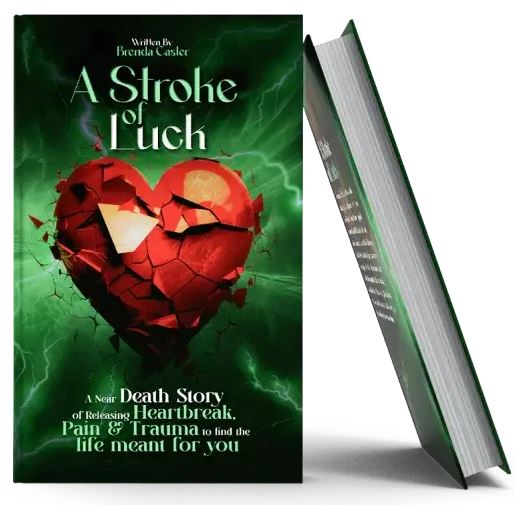Pain and trauma are intensely individual experiences, but also intensely universal. Everyone has gone through moments of emotional, physical, or psychological pain. When writers write truthfully and with courage about these topics, their books serve as a beacon for readers on the same journey. But what does make a superb pain and trauma book? Why do some stories resonate powerfully while others fail to land?
In this article, we’ll explore the essential elements of a powerful trauma narrative and show how Brenda Caster’s writing embodies the traits that make trauma literature not just meaningful but life-changing.
The Healing Power of Trauma Literature:
For some, pain and trauma books are more than what one reads; they’re a lifeline. Such books legitimize feelings, unveil concealed truths, and provide a means to a wonderful stroke of luck book. They enable readers to deal with their own emotions by resonating with the emotional lives of others.
A genuinely empowering pain and trauma book can:
- Offer emotional clarity
- Bring forth hope and resilience
- Provide coping techniques or therapeutic wisdom
Brenda Caster’s book is a glaring example of the potential trauma literature has to connect emotional suffering and emotional development.
1. Authenticity: The Basis of Connection
The best pain and trauma books are genuine. Writing that is honest builds trust between the writer and the reader. It states, “You are not alone.“
Brenda Caster writes from experience and the heart. She can speak of pain without making it melodramatic, and of healing without reducing it to simplistic terms.
2. Emotional Nuance: Catching the Diversity
Trauma is not a straightforward process. It does not follow chapters. The emotional terrain of a trauma survivor is nuanced, characterized by confusion, sadness, outrage, numbness, and, ultimately, healing.
A good pain and trauma book delves into these emotional layers with sensitivity. Rather than reduce emotions to black and white, it portrays the grays: the contradictions, the failures, the tiny victories.
Brenda’s stories excel here. She is respectful of the reader’s intelligence and emotional complexity, never falling into clichés or simplifications. Her stories tolerate ambiguity, growth, and truth.
3. A Journey of Transformation:
Perhaps the most empowering thing about trauma literature is the process of translating pain into strength. An excellent book does not simply tell what occurred, it illustrates how the author or character shifted as a result of it.
This path of change is motivational and provides readers with an idea of what could potentially work for them in their own lives. Brenda Caster skillfully maps this shift in her work. Regardless of whether it’s through moments of self-awareness, forgiveness, or rebirth, her characters and readers emerge transformed.
4. Universality: Making the Personal Relatable
A very effective book not only resonates with survivors of trauma. This universality is what distinguishes a good book from a great one.
Brenda’s books are personal, but not in a way that readers feel isolated from them. Readers from different backgrounds and age groups find themselves in her stories. She easily connects her experience of suffering with the universal human experience.
5. Offering Hope Without Dismissing Pain:
One of the most sensitive balances a trauma author has to achieve is between admitting pain and providing hope. A wonderful pain and trauma book doesn’t trivialize suffering, but it doesn’t put the reader in despondency either.
Brenda Caster’s writing never fails to provide this balance. Her writing admits the magnitude of trauma but encourages readers to heal gently. Hope in her writings isn’t artificial; it grows organically from honesty, resilience, and self-knowledge.
6. Literary and Emotional Craftsmanship:
A good trauma book is not only emotionally deep, but it is also well-crafted. Literary merit counts. The structure, pacing, voice, and language of how something is told can significantly influence how a reader responds to it.
Her writing is lyrical but earthy, reflective but not precious. She welcomes us with ease and holds us there with emotion.
7. Community and Connection Through Shared Stories:
Another characteristic of an effective pain and trauma book is a community-building effect. When readers read their stories in the pages, they tend to feel less isolated. The books establish a tacit connection between the writer and the reader, and even between the readers themselves.
Brenda Caster’s books have encouraged thousands of readers to share their own stories, in a ripple effect of vulnerability and courage. Through book clubs, online forums, and individual journaling, her words launch powerful dialogues that facilitate the healing of the page.
Brenda Caster’s Pain And Trauma Book Reading List:
If you’re looking for a pain and trauma book that combines emotional intelligence with literary craftsmanship, Brenda Caster’s work must be near the top of your list. Her writing provides more than tales, it provides refuge, introspection, and rebirth.
These are not books to be read and put aside. They linger. You might go back to them in trying times, underline sentences that speak to your very heart, or share them with someone who needs hope. Brenda Caster’s books are survival tools and hope signals.
Whether you’re working with new wounds or old scars, her stories affirm your experience and demonstrate that healing is achievable, not by forgetting the past, but by embracing it and making it a part of who you are today. In a society that so frequently invites us to hurry along, Brenda encourages us to remember that healing comes gradually, in integrity, and with tenderness.
Conclusion:
Brenda Caster’s books don’t just describe pain; they engage with it, question it, and ultimately transform it. In doing so, they help readers do the same. If you’re on a journey of healing, Brenda’s work may be the companion you’ve been looking for.
